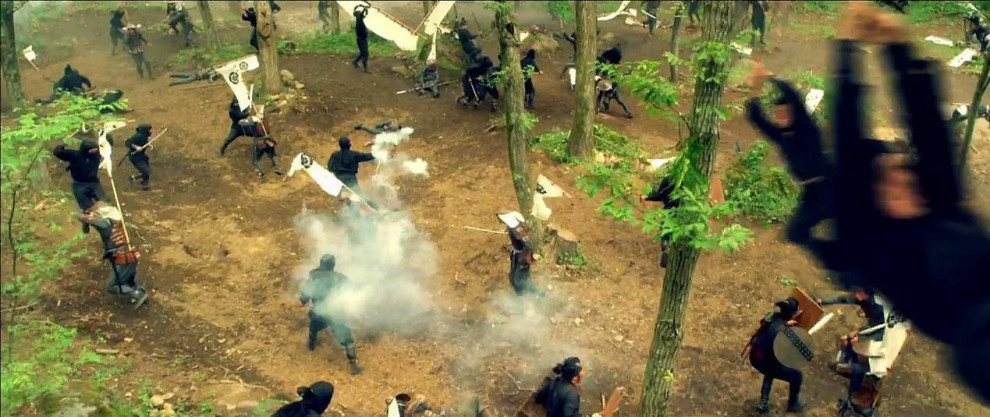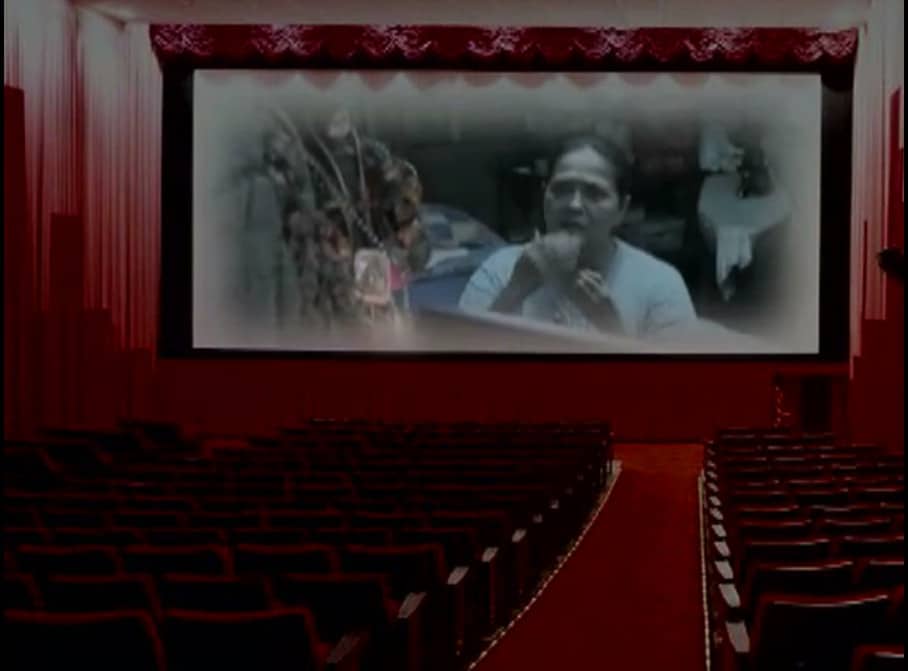A popular director at the Japan Cuts festival for his offbeat dramas, director Yoshihiro Nakamura instead takes on the jidaigeki epic, based on the novel of the same name by Ryou Wada. Focusing on fictional events that take place surrounding the Tenshō Iga War, “Mumon: The Land of Stealth”, was released in Japan under the title “Shinobi no Kuni” and distributed by Toho Studios.
Set during the Sengoku period among the sparring Iga ninja factions, Mumon (Satoshi Ohno) is a carefree 16th-century mercenary. When the ninja council makes a power play to defeat the young Nobukatsu Oda (Yuri Chinen) struggling to step into his father's warlord style as the group expands their rule across the country, Mumon jumps at the chance to satisfy his new bride Okuni (Satomi Ishihara), who demands that he follows through on his promises of wealth. With the help of Daiezen Heki (Yūsuke Iseya), he sees this opportunity to fulfill her desires and joins in the fight. Yet, Mumon soon finds that there are more worthy principles for fighting beyond money or a nation.
This here is certainly a fun and enjoyable effort. From the initial samurai fight that takes place, it's easy to see why Nakamura is a longtime festival favorite, as this comes complete with his signature sense of fun. The zany set-pieces, absurd slapstick comedy and outrageous characters all come together rather nicely here at delivering an immersive and somewhat silly experience. This setting also allows the director to introduce his other trademarks, featuring a jazzy soundtrack and fantastical ninja tricks to create an enjoyable experience. The action scenes, from the fortress attack to the slaughter of the ninja troops in the forest and the final battle in the temple all manage to feature strong action as well as solid comedic touches for a truly fun time.
For the most part, the cast here is quite admirable. Pop-singer Satoshi Ohno is quite accomplished as Mumon, who looks for the lazy way of dealing with situations yet does so with a code of justice. Willing to fight for money as well as his wife's affection, his character becomes far more of a take-charge personality, as his change becomes more prominent. It's a large role and Satoshi handles it nicely, being believable in the fight scenes and having some solid chemistry with Satomi. Satomi Ishihara, though, is pretty much a non-entity as Okuni, a self-centered socialite type only interested in wealth and power above all else. It's when she loses those qualities that she becomes entertaining and more human. This doesn't happen often enough, though, as it's mainly the scenes with the two together that give her anything to do. The other big lead, Ryohei Suzuki, is exceptionally intense as Heibee Shimoyama the leader of the enemy forces. A formidable fighter and a no-nonsense presence, as well as armed with a realistic revenge motivation, makes him a natural villain in these films and he serves “Mumon” well.
Really, the film only stumbles in one area. Since the cast is so big with everyone having their own motivations to explore, this gets bogged down in the middle. As Mumon and Okuni do what they can to rationalize their feelings for each other, the generals plot the downfall of the area and Shimoyama leads his troops into battle, the film does grind to a halt, starting about an hour in which the momentum gathered from the strong first half is disrupted. Thankfully, that doesn't hold it back too much, since it becomes far more fun in the final half being the big battle for the land, but it does stand out here somewhat, being the only real issue present. The goofiness may bother some viewers who aren't used to Nakamura's style, as the more modern slapstick style and tone are at odds throughout here with the period-piece setting, but that's not a huge issue either.
Frankly, this is yet another strong and highly enjoyable piece from a competent filmmaker, continually growing in confidence and style with each picture. This is certainly recommended to those who enjoy something a little different from their samurai pictures or are fans of Nakamura's past works.















